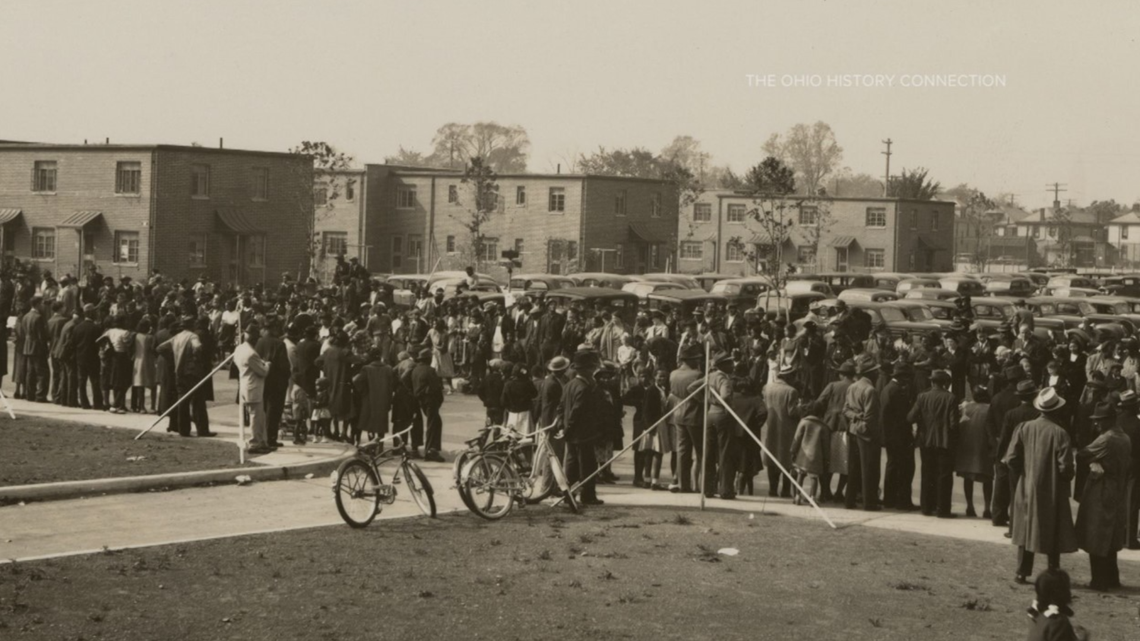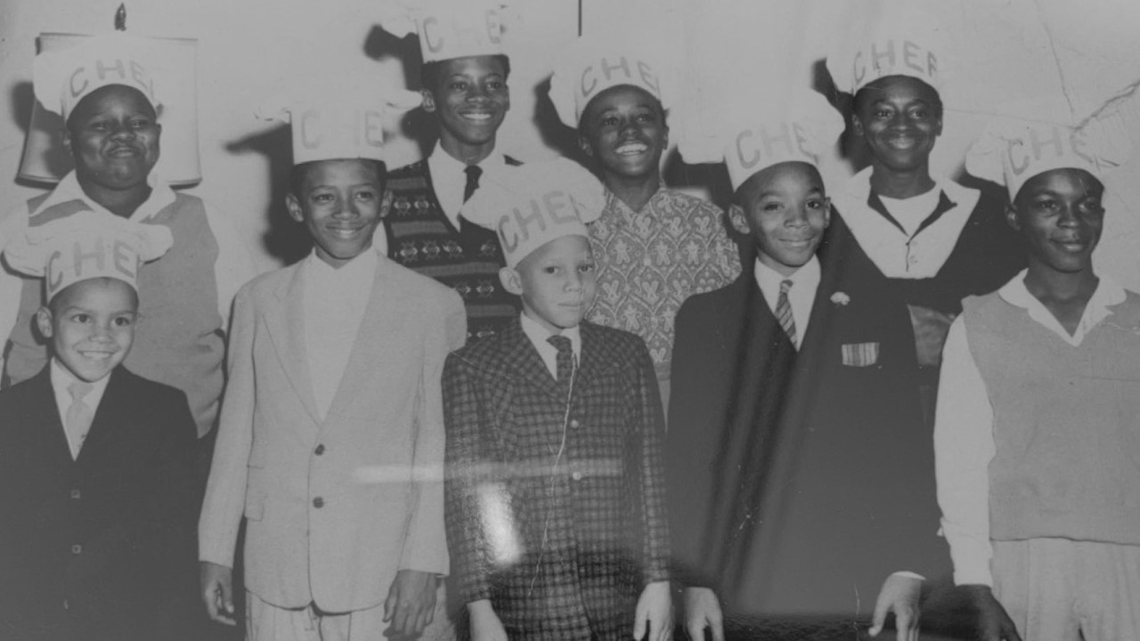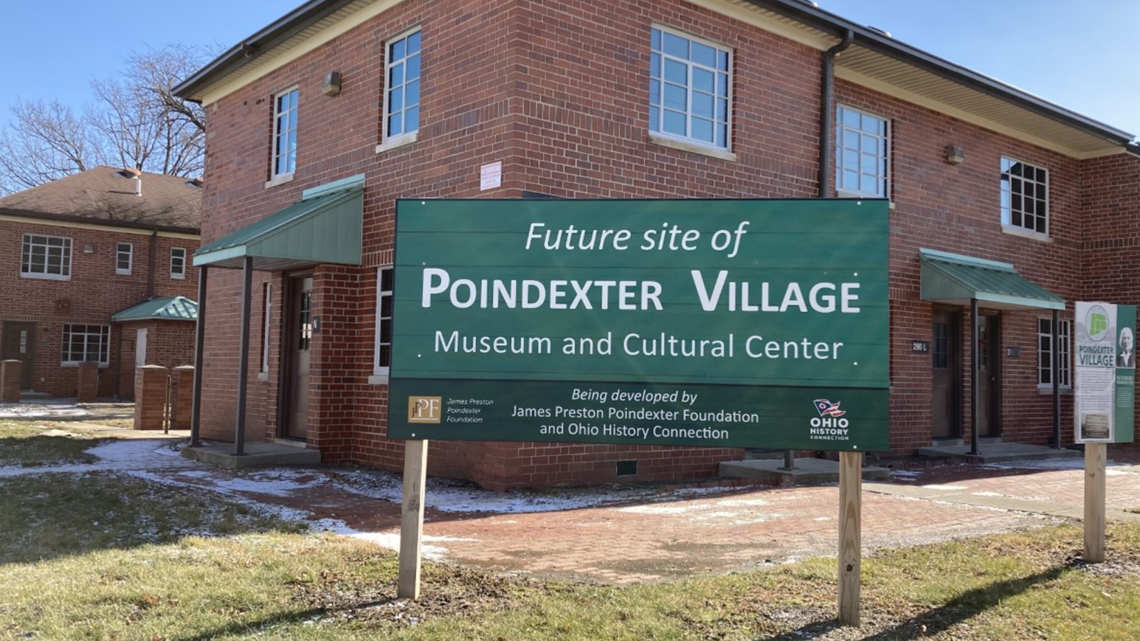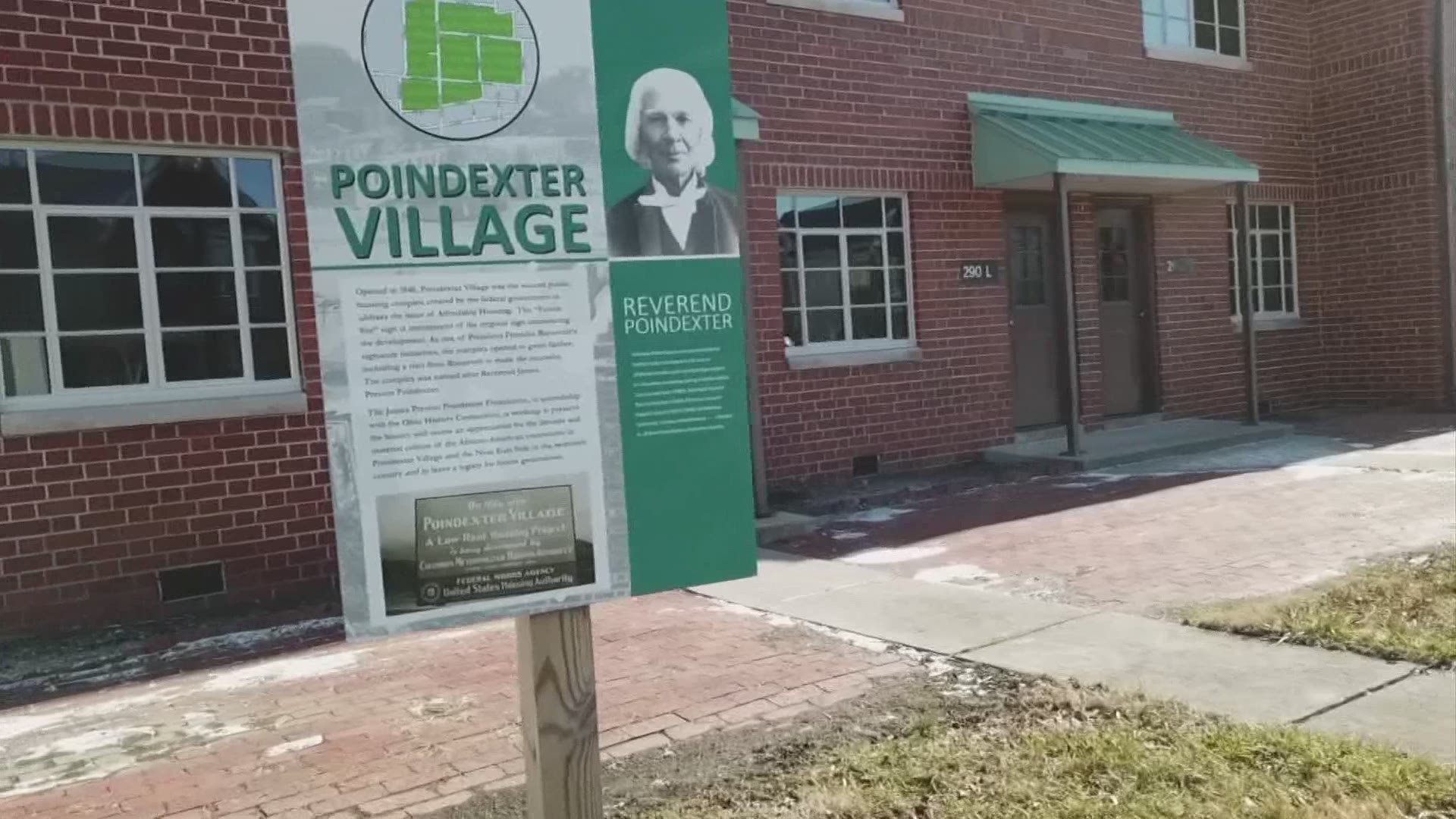As new people and places move into Columbus' Near East Side, two historic buildings remain, marking the future site of the Poindexter Village Museum and Cultural Center.
Ohio History Connection and James Preston Poindexter Foundation partnered to preserve the legacy of the village that was one of the first public housing projects in the United States.
The History
Poindexter Village got its name from Columbus abolitionist, activist, and politician Rev. James Preston Poindexter. A barber by trade, Rev. Poindexter was the first African American elected to the city council and the school board. To many at the time, he symbolized hope.
In the 1930s, people needed hope more than ever. President Franklin D. Roosevelt enacted a series of programs and projects during the Great Depression called "The New Deal." In 1934, the Federal Housing Administration was created, eventually becoming part of the Department of Housing and Urban Development (HUD) in 1965.
On Oct. 12, 1940, President Franklin D. Roosevelt traveled to Columbus to dedicate Poindexter Village as one of the nation's first public housing projects.
Local historian and former resident, Reita Bynum Smith, shared her sisters' recollections of that day.
"Everybody lined the streets," she said. "My sisters ... they were [there] and they said they could almost touch President Roosevelt's car."


After $2,098.00 in development costs, Poindexter Village opened with more than 400 units, featuring modern amenities. Smith said there was a long list of people wanting to live in the area.
"We had to have a sense of hope and that's what this whole area represented ... it gave you a little space of time to save your money because it was affordable. These were affordable homes," Smith said. "You could save and become a homeowner."


The Families
Sonny Burgess moved to Poindexter Village with his family when he was a child in the 1950s.
"Poindexter Village to a lot of Blacks was a gold mine," Burgess said. "When we moved here, we thought we were in heaven. It was so new and modern. They had a bathroom, a shower, a tub, the bedroom was so neat and clean. We weren't used to that."
Burgess said what he remembers most is how much fun he had.
"I remember the good times playing on the grass under the lights - singing," he said. " Can't sing a lick - but we would be singing!"


He said what made the community special was how close it was.
"We didn't know how poor we were, but we were the rich because we took care of each other," Burgess said. "It was a community. Everybody took care of everybody. If somebody was hungry, they would go to somebody else's house to eat. Everybody fed everybody. We had a place called Carl Brown's. That is where we would get our food from. If anyone needing anything ... they would go to Carl Brown's and he would give them credit."
Smith also moved to Poindexter Village in the late 1950s with her son and twin daughters.
"It was a village," she said. "While I'm watching the twins, my neighbors were watching my son. That's the way the community always existed."
Smith said hardworking families flourished in Poindexter Village. They set high standards for the community. It was home to community leaders, artists, doctors, educators, and so much more.
"It was a self-sufficient community. This village was nestled in the midst of a very vibrant community," she said.
The Fight
As the years went on, drugs and crime moved into the area, leading to calls for the demolition of Poindexter Village and redevelopment.
Smith attributes its demise to leadership "[allowing] reduction of its standards."
In March 2013, 10TV reported the once-thriving community was now a vacant, boarded-up complex spanning 27 acres with 35 buildings.
Smith, along with many others, fought to preserve the site, representing the heart and soul of the Black community.
"We became very concerned. Everybody became very concerned," she said. "This was federal grounds - this was a federal project - it qualified to be a historic site."
In 2013, Columbus Metropolitan Housing Authority demolished 33 of the 35 buildings to make way for redevelopment.
Ohio History Connection purchased the two remaining buildings. With the help of the James Preston Poindexter Foundation, the buildings will be turned into a museum and cultural center.
"We have been an invisible people and our history has been devalued from the very beginning," Smith said. "All of the contributions that we have made to the development of this country, this state, and this city, has been ignored."
Smith said the goal of the museum is to educate the community on this important part of history.
"It's not about just educating young Black children. It's about educating everyone as to those contributions that were made by so many individuals in this city and this nation," she said.
The Future
While the Poindexter Village Museum and Cultural Center has yet to open, people can donate to the project here.
Smith said she hopes new residents in the area will come to appreciate its history.
"I hope these new people will come to understand what this area really represents. I hope they have that same sense of belonging to one another. Right now, I look at my own community and I have to indict myself. I don't know my neighbors' names. I don't have a relationship with the people I live next to," she said. "We can't live in the past, but the past is our foundation. We build on it and we build on it by those people who came before us."


10TV's Angela Reighard interviewed Columbus Metropolitan Housing Authority (CMHA) President/CEO Charles D. Hillman about the work that has been done in the Poindexter Village area and what is left to do.
"Columbus Metropolitan Housing Authority has been a resident and a member of The Near East Side for over 80 years," Hillman said. "We've seen it go from an epicenter in the Black community through challenging times - results of racial issues and policies - that turned it into not-so-nice of a community for a period of time to once again, a rebirth."
Hillman said through community reinvestment, CMHA has built and developed more than 450 new mixed-income units of housing, including Legacy Pointe at Poindexter, Poindexter Place, and The Harris. CMHA also partnered with organizations to develop Columbus Scholar House. A CMHA spokesperson told 10TV Scholar House 1 & 2 "offers affordable housing for those attending school, [who] are single parents and delivers services such as on-site daycare services and supportive case management." Scholar House 3 will serve foster youth attending secondary education.
"While a lot has been done, there is still lots to be done," he said. "Neighborhoods are the foundations of communities and cities and we need partners who are willing to invest and respect that community to develop housing and services that residents will benefit from to return it to its viable community."
You can watch portions of Charles Hillman's interview below.
To read more about the history of Poindexter Village, click here.

